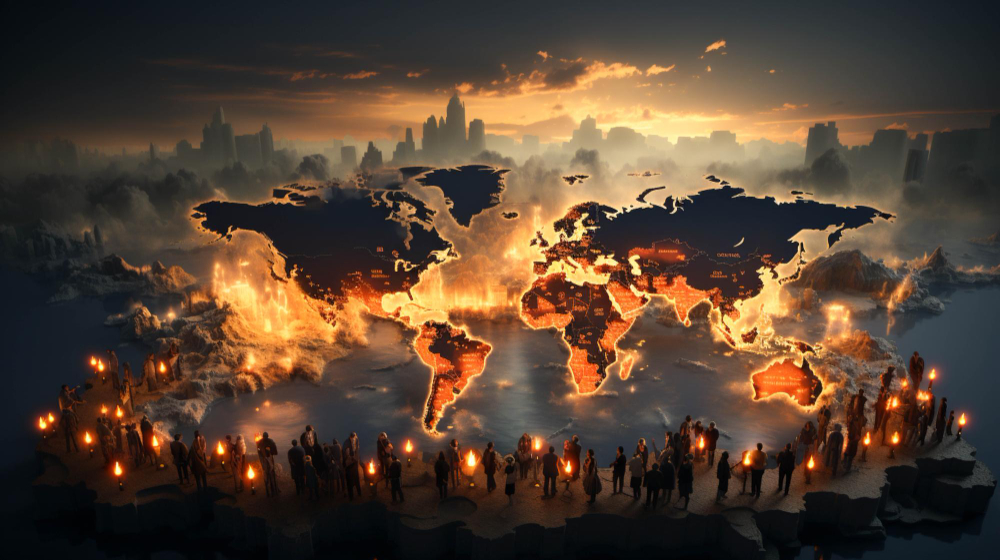Determining the title of the most dangerous country in the world is a complex and subjective matter, influenced by various factors such as crime rates, political instability, conflict zones, natural disasters, and public health crises. While no single country holds the dubious title universally, several nations have gained notoriety for their challenging living conditions and high levels of risk. Let’s delve into some of the contenders for the title of the world’s most dangerous country and explore the factors contributing to their precarious status.
Crime-Ridden Urban Centers
Many countries grapple with high levels of crime, particularly in densely populated urban centers. Cities plagued by organized crime, gang violence, and drug trafficking often experience elevated levels of homicide, robbery, and other criminal activities. Countries such as Mexico, Venezuela, Brazil, and South Africa are frequently cited for their crime-ridden cities, where residents face daily security concerns and law enforcement struggles to maintain control.
Political Instability and Conflict
Political instability and conflict pose significant risks to the safety and security of citizens, contributing to the classification of certain countries as dangerous. Regions experiencing ongoing conflicts, civil unrest, or terrorist activities are inherently hazardous environments for residents and travelers alike. Countries such as Afghanistan, Syria, Iraq, and Yemen have been embroiled in protracted conflicts, resulting in widespread violence, displacement, and humanitarian crises.
Environmental Hazards and Natural Disasters
Natural disasters and environmental hazards pose significant threats to the safety and well-being of populations, particularly in countries prone to seismic activity, hurricanes, floods, or droughts. Vulnerable infrastructure, inadequate disaster preparedness, and socioeconomic disparities exacerbate the impact of natural disasters, leading to loss of life, displacement, and economic devastation. Nations such as Haiti, Nepal, Bangladesh, and the Philippines are among those most susceptible to environmental risks.
Public Health Emergencies
Public health crises, such as pandemics and outbreaks of infectious diseases, can significantly impact a country’s safety and stability. The spread of contagious illnesses, inadequate healthcare infrastructure, and challenges in disease containment can strain healthcare systems and endanger populations. Countries grappling with public health emergencies, such as Ebola outbreaks in West Africa or the COVID-19 pandemic globally, face heightened risks to public safety and well-being.
Economic Disparities and Social Inequality
Persistent economic disparities and social inequality contribute to heightened levels of risk and insecurity in many countries. In nations marked by widespread poverty, unemployment, and inadequate access to basic services, marginalized communities are particularly vulnerable to crime, exploitation, and social unrest. Countries grappling with significant socioeconomic challenges, such as Haiti, Democratic Republic of the Congo, and Somalia, face complex safety concerns rooted in economic and social inequality.
Human Rights Abuses and Political Repression
Countries characterized by human rights abuses, political repression, and authoritarian regimes pose significant risks to the safety and freedom of their citizens. Violations of civil liberties, suppression of dissent, and lack of accountability for state-sanctioned violence create environments of fear and oppression. Nations with a history of human rights abuses and political repression, such as North Korea, Saudi Arabia, and Eritrea, are considered dangerous for their systemic disregard for individual rights and freedoms.
Navigating the Landscape of Risk
In conclusion, determining the world’s most dangerous country is a nuanced and multifaceted endeavor, shaped by a complex interplay of factors ranging from crime rates and political instability to environmental hazards and socioeconomic challenges. While several countries face significant safety concerns and risk factors, no single nation holds the exclusive title of the world’s most dangerous. Instead, the landscape of risk is dynamic and ever-evolving, highlighting the importance of informed decision-making, risk assessment, and vigilance for individuals and organizations navigating global landscapes.
